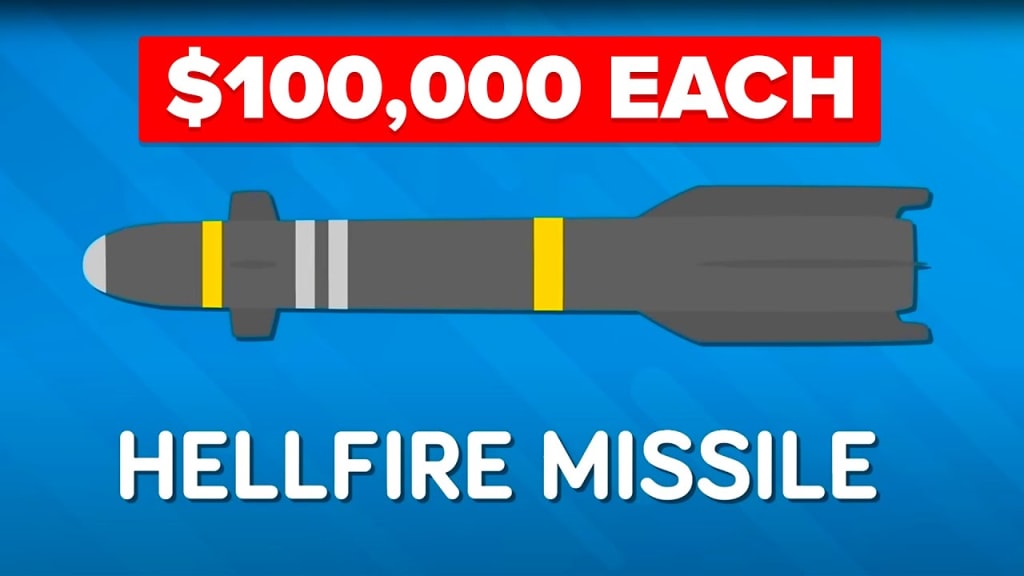
Real Reason Why AGM-114 Hellfire Missile Is So Expensive
The AGM-114 Hellfire, also known as Heliborne Fire and Forget, holds a prominent position as the primary air-to-ground missile in the US arsenal. Since its combat debut in the Persian Gulf War, it has consistently demonstrated operational success, making it the preferred choice for both conventional and unconventional strikes. Despite its widespread use, the Hellfire's price tag, hovering around $100,000 per missile, may raise eyebrows regarding the seemingly high cost for such a commonplace weapon system. This prompts the question: what sets the Hellfire apart and justifies its expense?
The origins of the Hellfire trace back to the 1970s, a period marked by the intense arms race between the US and the Soviet Union. Recognizing the numerical disadvantage the US would face in a kinetic conflict, military planners aimed to counter waves of advancing Soviet armor. The solution came in the form of the Hellfire missile, developed and introduced into service in the early 1980s after years of research and development.
Initially deployed primarily on rotary-wing aviation platforms like the Apache for the Army and Super Cobra, Viper, and Navy helicopters, the Hellfire's use expanded over time. The Air Force incorporated it into armed drones, such as the MQ-1 Predator and MQ-9 Reaper, while the Marine Corps equipped KC-130J tankers with the Harvest Hawk variant. Even experiments with ship-mounted launchers on Independence-class Littoral Combat Ships occurred, though their permanent integration remains uncertain.
The Hellfire's baptism of fire occurred during the 1989 invasion of Panama, followed by its pivotal role in the Persian Gulf War in 1991. Its contribution to destroying thousands of Iraqi tanks and various other targets solidified its indispensability in modern warfare. Consequently, production ramped up, resulting in over 100,000 Hellfire missiles produced for US and allied militaries worldwide.
What makes the Hellfire stand out is its unique ability to be controlled by an operator from launch to impact. Equipped with a receiver that detects a specially coded laser designator signal, the missile requires an operator to "paint" the target with the laser. The Hellfire homes in on the infrared wavelength of the designator, adjusting its flight path for precision. While this method has its drawbacks, such as exposing forward observers to enemy fire, it allows for a high level of control over the missile's trajectory.
The firing modes, including Lock On Before Launch and Lock On After Launch, offer tactical flexibility. The former allows firing units to confirm a lock on the target before launching the missile, while the latter enables firing first and designating the target during flight. These modes address exposure concerns but come with trade-offs in terms of altitude and potential loss of lock.
Despite its versatility, the laser designator used in guiding the Hellfire has limitations. Factors like beam divergence, attenuation, overspill, and underspill affect its effectiveness, especially in adverse weather conditions. To overcome these challenges, the Longbow Hellfire variant was developed, featuring a self-guiding capability through an onboard radar seeker.
The Hellfire missile family comprises various variants tailored for specific needs. From the OG Alpha variant to the advanced Longbow and specialized R9X with blade deployment, each variant caters to diverse scenarios, improving accuracy, resistance to countermeasures, and target penetration capabilities.
The Hellfire's strategic advantages lie in its precision, modularity, anti-armor prowess, and adherence to strict rules of engagement. Its track record in diverse conflicts, from conventional warfare to targeted strikes against high-profile individuals, establishes it as a versatile and effective weapon. Despite the substantial cost, the Hellfire remains a go-to solution for military forces worldwide, ensuring its continued service for generations to come.
About the Creator
Quint
Welcome to my corner on Vocal.media! I'm a passionate writer sharing engaging stories and unique perspectives. Explore cultures, arts, sciences, and everyday moments with me through concise and intriguing articles. Enjoy the reads!






Comments
There are no comments for this story
Be the first to respond and start the conversation.